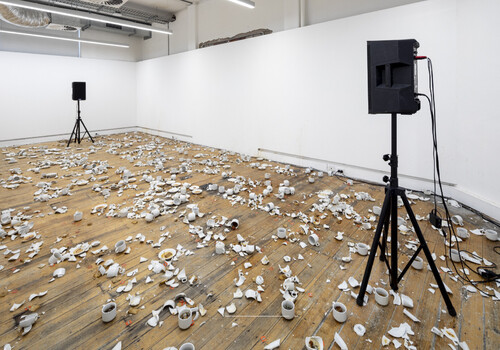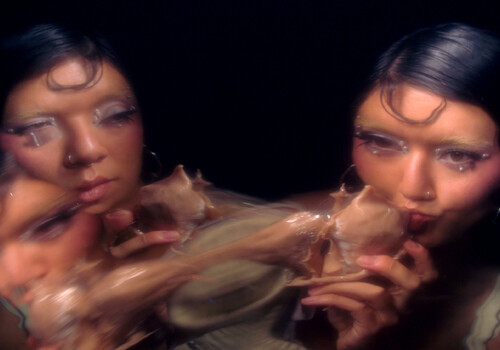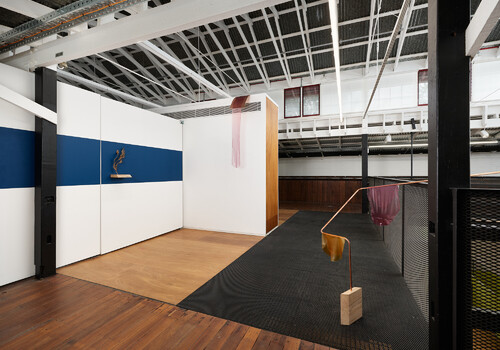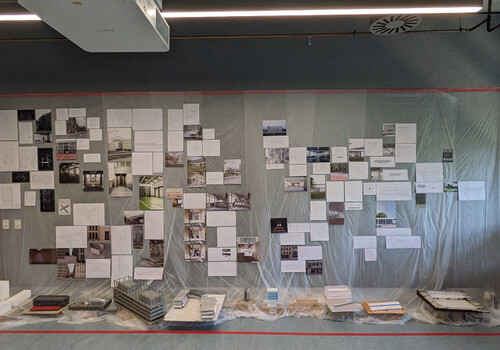Sculpture, National Art School
By Lachlan Thompson
It felt as if I saw the sculptural component of this year’s NAS grad show twice, as a series of double takes. Many of the works are not as they seem—forms cast in materials not their own. Under the leadership of artist Hany Armanious, casting has become a key component of NAS’s sculptural program, and this year almost half of the graduates employed the process. Yet the works here engage casting not just as a process, but also as a kind of sensibility. A cast object is something replicated by amalgamating an “original” form with an alternative materiality—think of a clay figure which, through casting, is transmuted into a bronze statue. Casting’s tendency to amalgamate affords an aesthetic tactic of uncanniness—a zany melding of familiar materials, objects and forms that treats constitutive materialities as distinct, then homogenising to propose new material arrangements and possibilities.
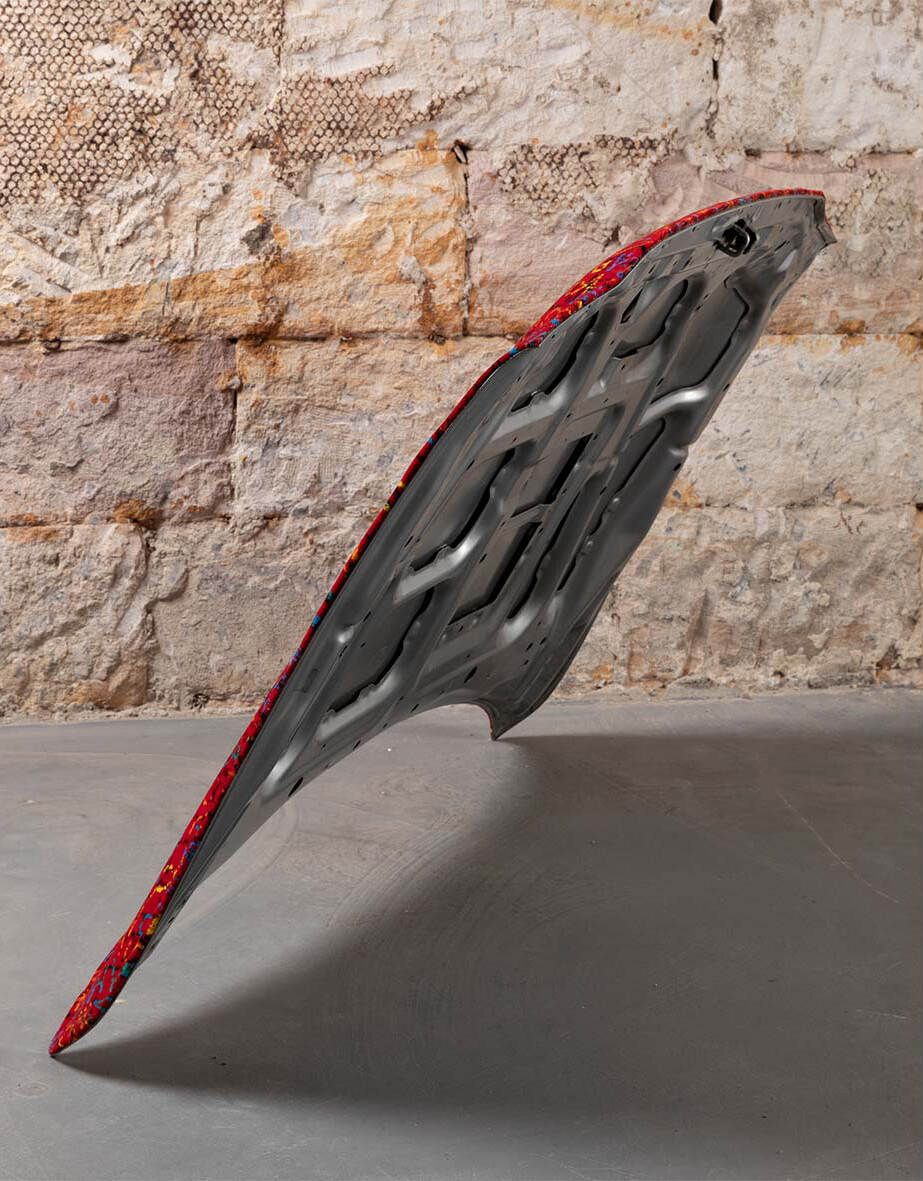
Kika Baker, Diablo Red, 2024, found bonnet, fabric, 112 x 148 x 9.5 cm.
In the dense presentation of sculptural works, Kika Baker’s Diablo Red (2024) immediately catches my eye. Held up, ajar, with fishing wire, is a found car bonnet seamlessly upholstered with public transport-core moquette. Like the cast object, Baker binds fabric and bonnet together in a seemingly irreversible arrangement, transforming the bonnet into a bus seat, a private vehicle made public. In this arrangement, the relationship between the bonnet and the fabric is treated as syntactical, at once relying on their autonomous materiality while pushing up against one another’s legibility. A playful and absurd sentence of materials.

Samuel Chan, Transfiguration, 2024, Chillagoe White Pearl marble, mild steel, incense, 172 x 26 x 26 cm.
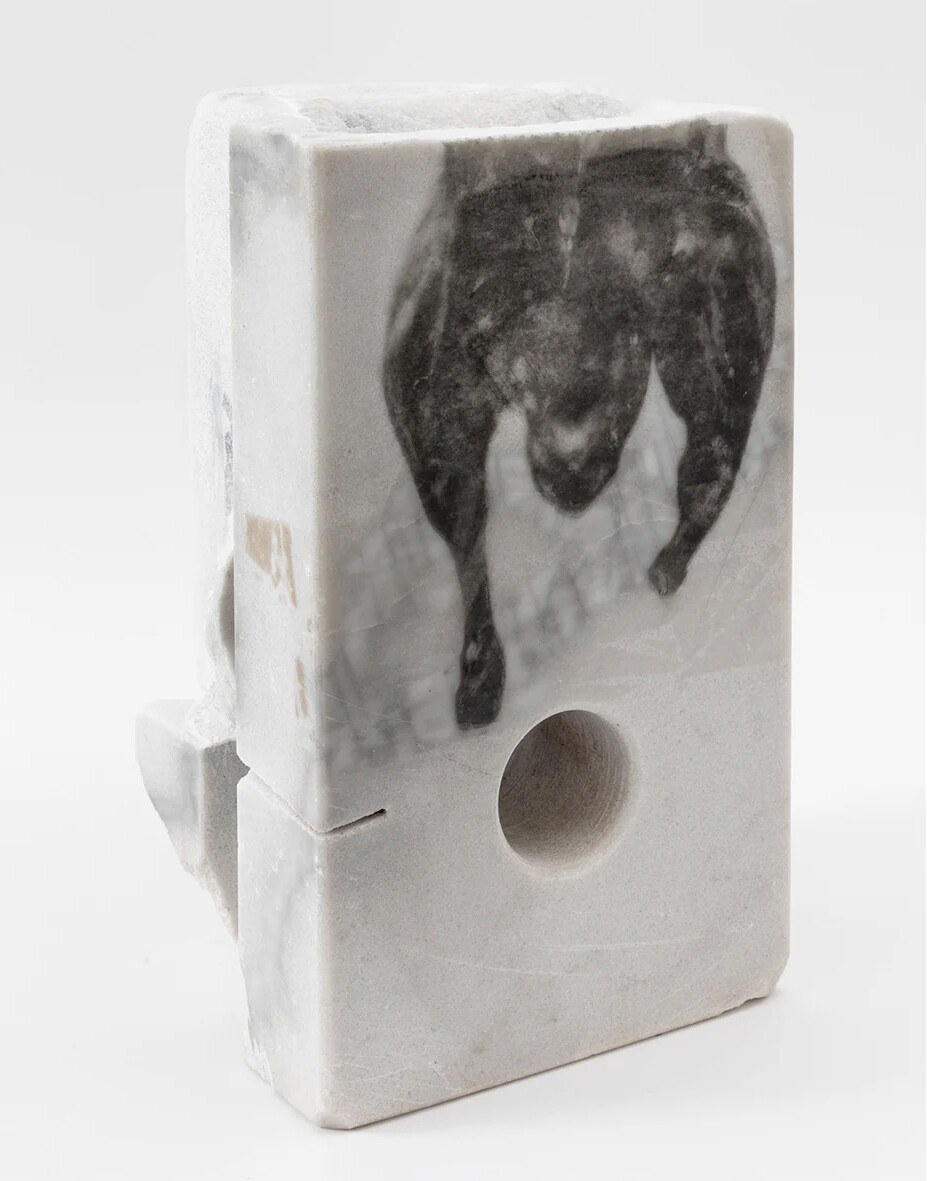
Samuel Chan, Cornerstone, Carrara marble, eucalyptus transfer, 39 x 23.5 x 18 cm.
Samuel Chan’s Cornerstone (2024) and Transfiguration (2024), while separated in the gallery, are undeniably in exchange. Both made of Queensland marble, Transfiguration—a chicken carcass made incense-holder—sits neatly on a plinth whereas Cornerstone—a hunk of marble with a eucalyptus transfer of a chicken carcass on one side—is positioned on the ground. There is residue of tape on its edges, a hole bored through the middle and some half-made incisions. Taken together, Cornerstone is quite possibly a failed attempt at Transfiguration. I find myself inspecting each cut and peering through the hole—failed attempt or not, I am convinced that there is a chicken somewhere within that hunk of marble waiting to be excavated.

Olivia Lindgaard, Boogie Woogie, aluminium, wood, paint, 220 x 60 x 380 cm.
In the corner is Olivia Lindgaard’s playfully named Boogie Woogie (2024). A grouping of aluminium brackets laced with silver painted branches leans against the wall. Taking cues from the name, I imagine them as two gangly legs. The work participates in the act of fusing its own materiality, metal-made-wood and wood-made-metal. Looking once, the branches are figured as wire-like tendrils; looking again, an aluminium bracket bifurcates into silver branches. This movement between materialities creates an ambiguity between bracket and branch. This, however, this doesn’t prompt me to question their relationship; rather, it reifies it. The constitutive elements of the work are brought into a kind of pact whereby they reconfigure each other over and over again, at once coming apart and homogenising.
I leave in a dizzying state, my grasp on objects feels unstable, but open. Baker, Chan, and Lindgaard place objects within an alternative set of material conditions: a car bonnet is a seat, a hunk of marble is a chicken, an aluminium bracket is a tree branch. These works are animated by the oxymoron of uncanny familiarity; this produces the double take, which, after all, may be an instinctual desire to go back for more.
Lachlan Thompson is an artist and writer based on Cammeraygal and Gadigal land.



















